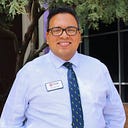Speaking through dichos and preserving our history
In the book Chasing Dichos through Chimayo, author Don J. Usner presents a marvelous collection of stories told by the elders of this Northern New Mexican town. The stories recant times of yesteryear, often represented bilingually through dichos, or sayings, that tell the history of the area’s people and traditions.
I love dichos because they are more than just sayings that you hear growing up. In their simplicity, and often-rhythmic nature, they tell us people’s feelings and sometimes their principles.
Dichos teach us lessons, and they help fill empty moments when you are looking for something to say that has just the right amount of meaning.
Every culture has its clichés. We’ve all been told all that glitters isn’t gold. We’ve seen the embarrassed fellow walking with his tail between his legs. Don’t know what to say? Maybe cat got your tongue.
As a Mexican-American, for me dichos have an extra layer of meaning. Like a cebolla, you hear one of these poetic sayings and you can go on and on peeling back the connotations.
In the first chapter of Chasing Dichos Through Chimayo, Usner tells the story of two older cousins, now in their 80s, living in the small town known for its heirloom chile and El Santuario, a Catholic Chapel.
The cousins go back and forth remembering people of the past, their upbringing, and participation in traditional rituals. Seamlessly, they interject dichos such as no hay bolsa mas quieta que una bolsa sin dinero. It means that there is no purse more still than a purse without money. So the cousins were hard workers. There was no other way.
What a beautiful way to share memories and deeply embedded philosophies. People don’t speak this way anymore.
I love this book because it achieves the important accomplishment of preserving the history of a community. For people from poor, or underprivileged as it is said today, backgrounds, documentation of genealogies and historic moments are often lacking.
We tell our stories orally, from grandparents to children. The achievements and groundbreaking moments that made a difference to our families and neighbors are told through the beautiful tradition of storytelling. Cuentos and dichos are what have helped us know today about our past.
Little moments, not just the big ones, are significant enough to pass along to the next generation. The times our uncles were in bar fights. Stories of kids riding bikes along dusty arroyos and overseeing a horizon that seemed endless.
Now more than ever, culture is becoming, like everything else, homogenized. This is why the arts and such an important part of capturing and memorializing the important differences we bring to each other as peoples.
I suggest you read Mr. Usner’s book and for the kids, take them to see the new Disney animated movie Coco. It is bright, colorful, fun, filled with music and adventure. And most importantly it teaches us.
I’ve seen Coco three times. Like no other animated film before, it spoke to me in meaningful ways. And like its central theme Remember Me, it reminded me that there is no more valuable lesson to pass on to my future children than to let them know from where they came.
So tell your stories and tell them again and again. Like the saying goes, la memoria es como el mal amigo, cuando mas falta te hace, te falla (memory is like a bad friend, when you need it the most, it fails you).
